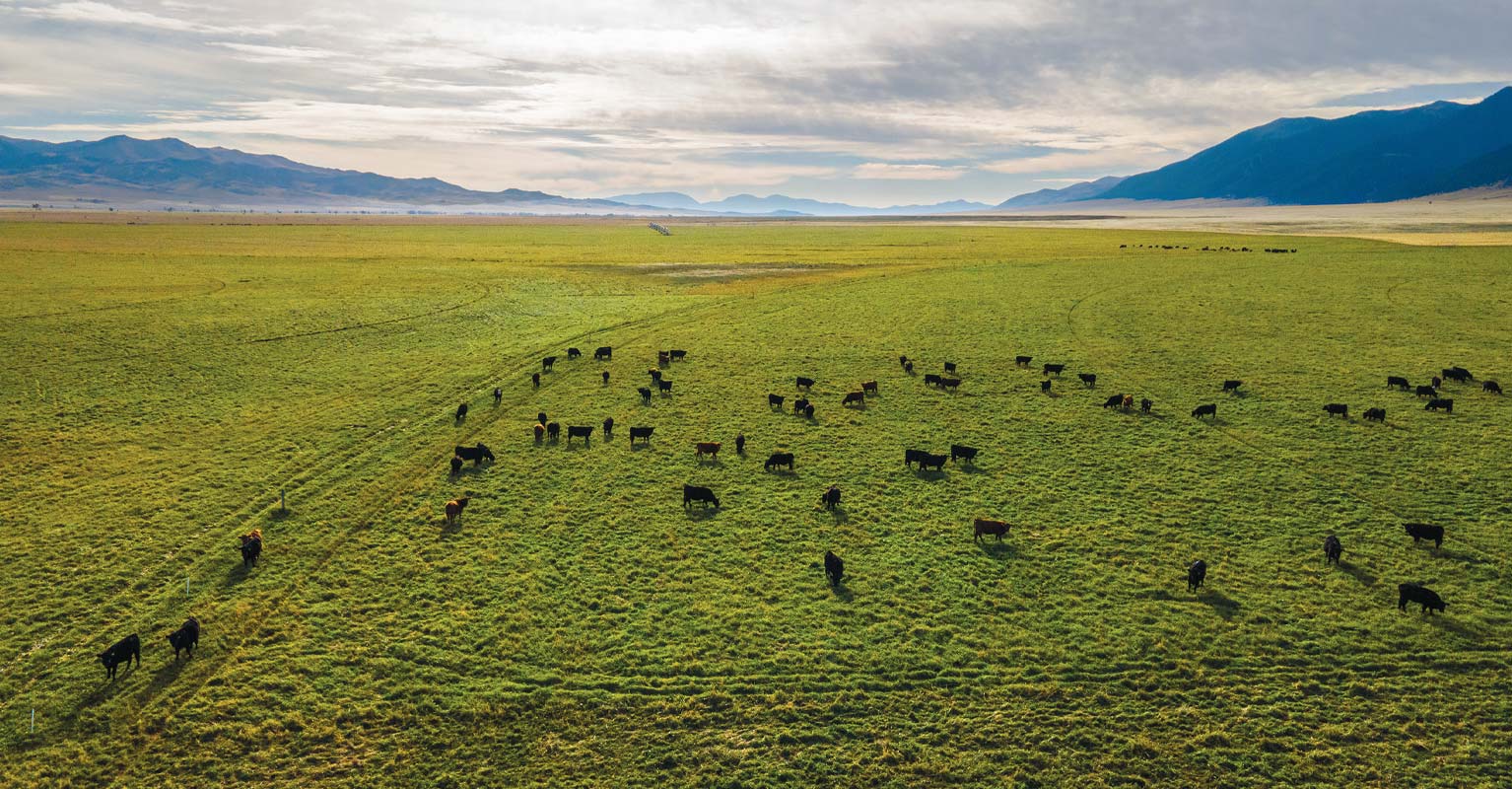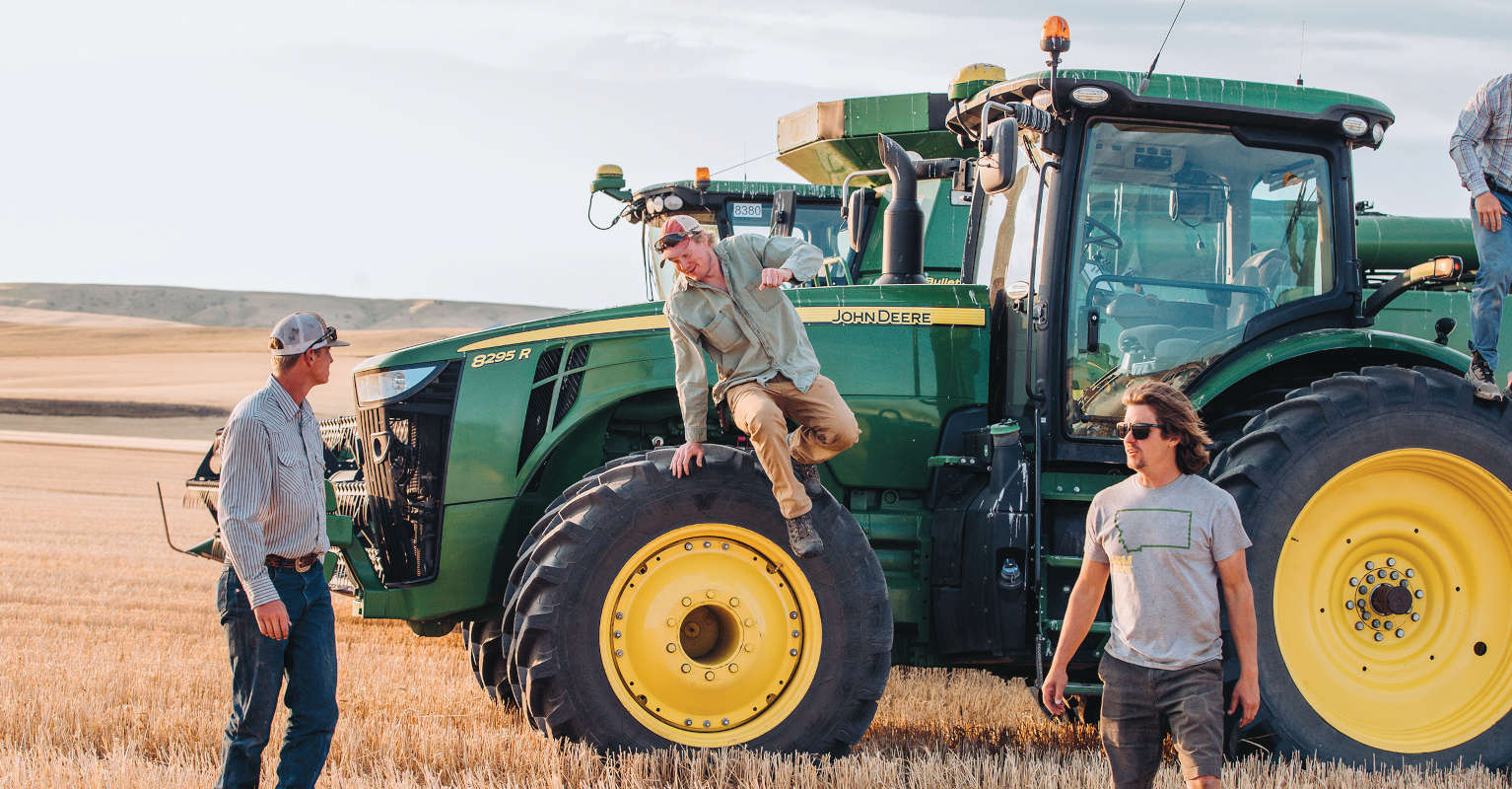What North Bridger Bison offers—grass-fed and field-harvested bison—is rare; the majority of bison raised for meat follow a feedlot model.
From the beginning, the Skoglunds knew they wanted to create a sustainable ranch that benefited not only their family, but the bison and the surrounding ecosystem as well.
Matt and Sarah Skoglund didn’t wake up one morning and decide on a whim to start a bison ranch, though their quick launch into the industry might make it seem that way. Rather, the Skoglunds’ transition from Bozemanites to bison ranchers entailed financial risk and repeated heart-to-heart conversations between Matt and Sarah, who knew that ranch life would require significant adjustment for their family of four.
Though the couple came into the enterprise with a lack of ranching experience, they also came with specialized skills: Matt was experienced in field-dressing animals and was familiar with bison because of his work with the Natural Resources Defense Council, and Sarah’s background in art and interior design has made their recently renovated ranch house a thriving Airbnb. The couple’s two children, Otto (5) and Greta (2), have made their own adjustments: Greta plays in the creek and explores sagebrush; Otto hunts bugs and explains to visitors that bison droppings are good for the soil.
But before bug-hunting and trips in the pickup, there was what Matt calls an unforgettable day: January 30, 2019, when ninety-five bison arrived at the North Bridger Bison ranch, which is located outside the town of Wilsall, on the backside of the Bridger Mountains. During the four months between when the bison arrived and when the meat became available to order, Matt and his family worked to create a business and lifestyle that could survive the trials of time. Matt Skoglund explained that they needed “every ‘i’ dotted and every ‘t’ crossed” so that when the orders started rolling in, “it was all at a high level of excellence.”
The Skoglunds’ desire for excellence is also reflected in the way their bison are managed. Particularly, this refers to field harvesting, meaning that the bison are killed and fielddressed in one of the ranch’s pastures. Matt, an avid hunter and outdoorsman, takes great pride in the practice and sees it as a cornerstone in North Bridger Bison’s commitment to healthy and humanely sourced meat: “When I read about field harvest in Dan O’Brien’s book Buffalo for the Broken Heart, it was an aha! moment. I said ‘I want to do that. That’s the right way to do it, and I know there’s a market for it because more and more people are asking about where their food comes from, whether it’s meat or fruit or vegetables.” He goes on to explain: “The meat our customers receive from us is grass-fed bison meat from an animal that’s standing there one second and in outer space the next. From an ethical and humane standpoint, it doesn’t get any better. And from a taste and health standpoint it doesn’t get any better, because there’s no stress in the meat.”
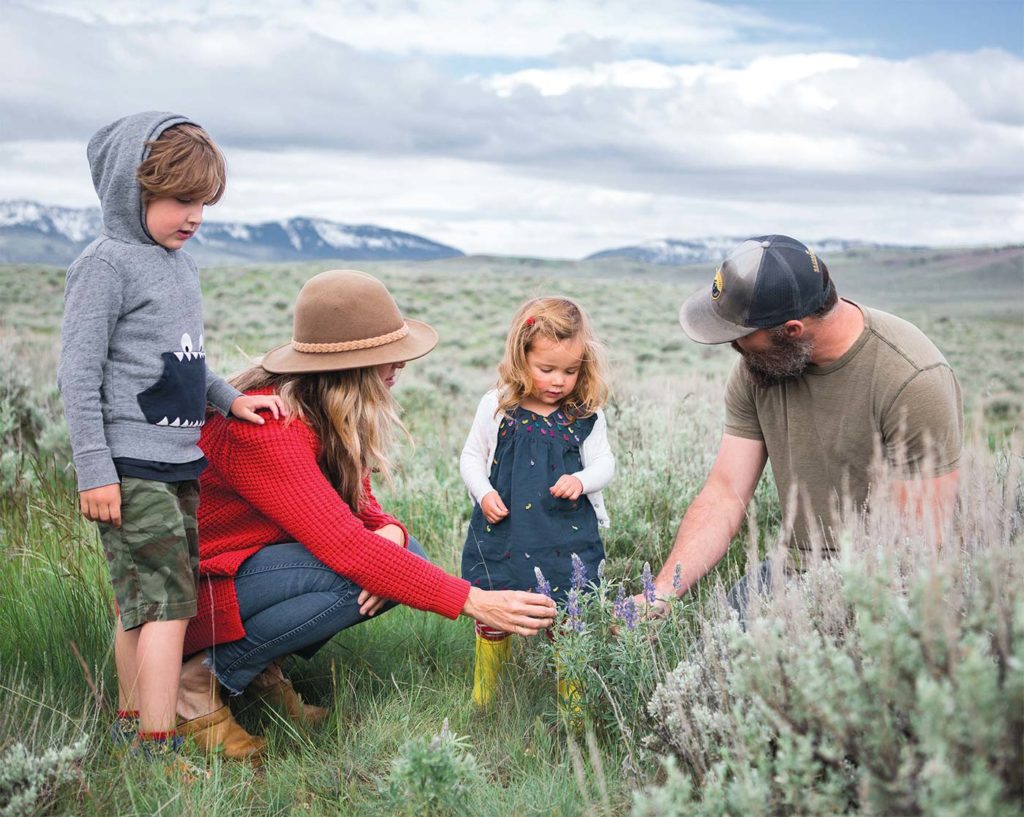
When the Skoglunds receive an order, Matt takes his gun into the pasture where the bison graze, selects an animal, and proceeds to harvest the animal before field-dressing it in another pasture. Then he loads the carcass onto his pickup and drives to Rawhide Meats in White Sulphur Springs, where the meat is dry-aged for ten days, then cut and wrapped according to consumer preference.
To keep things simple, North Bridger Bison offers two cut options for what they call “quarters,” which are approximately eighty to ninety pounds of meat: the Montana Cut, which offers consumers more ground bison and fewer cuts of meat, and the Big Sky Cut, which offers more cuts of meat and less ground bison. The Skoglunds are currently selling North Bridger Bison meat online and through word-of-mouth sales, and have had both local and out-of-state interest. They’re also working to have their field harvesting process inspected by the state, which would allow them to expand their sales to restaurants, grocery stores, and caterers, and sell smaller quantities of meat to their customers.
From the beginning, the Skoglunds knew they wanted to create a sustainable ranch that benefitted not only their family, but the bison and the surrounding ecosystem as well. As a result, North Bridger Bison’s management techniques are rooted in holistic practices that encourage agricultural regeneration. Though these terms are not formally regulated, Matt Skoglund is clear on what they mean at North Bridger Bison: “Using our management practices on the ranch to improve the grasses, forbs, and wildflowers; improve the soil health; suck carbon out of the atmosphere and store it in the soil; provide wildlife habitat; and not use chemicals.”
It also means working to build the topsoil available to them rather than mining or removing it, and implementing practices that provide a habitat for birds, bees, butterflies, and other wildlife. Above all, North Bridger Bison aims to create an end result that is good for the land, the water, the animals, the business, and the consumer.
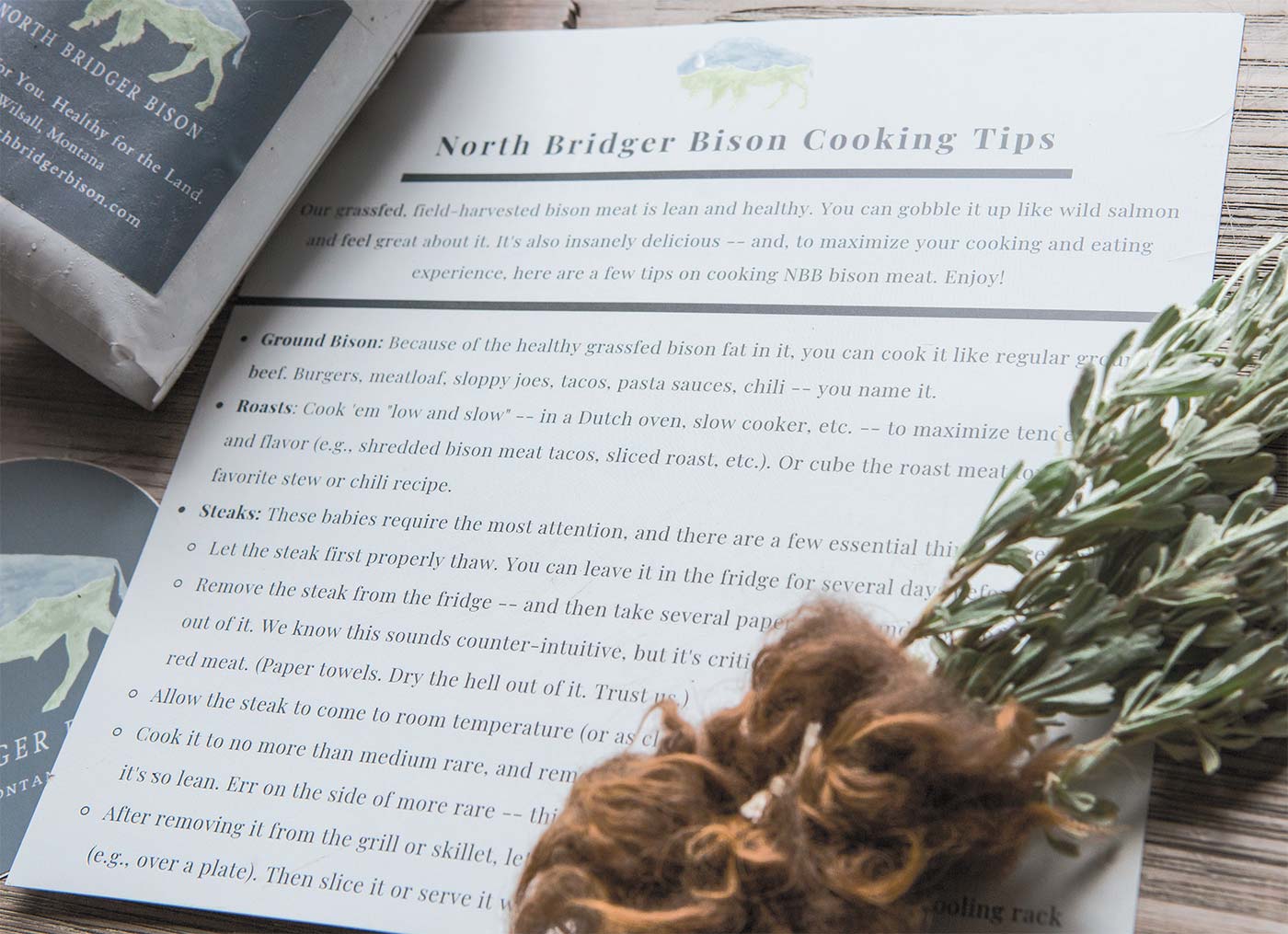
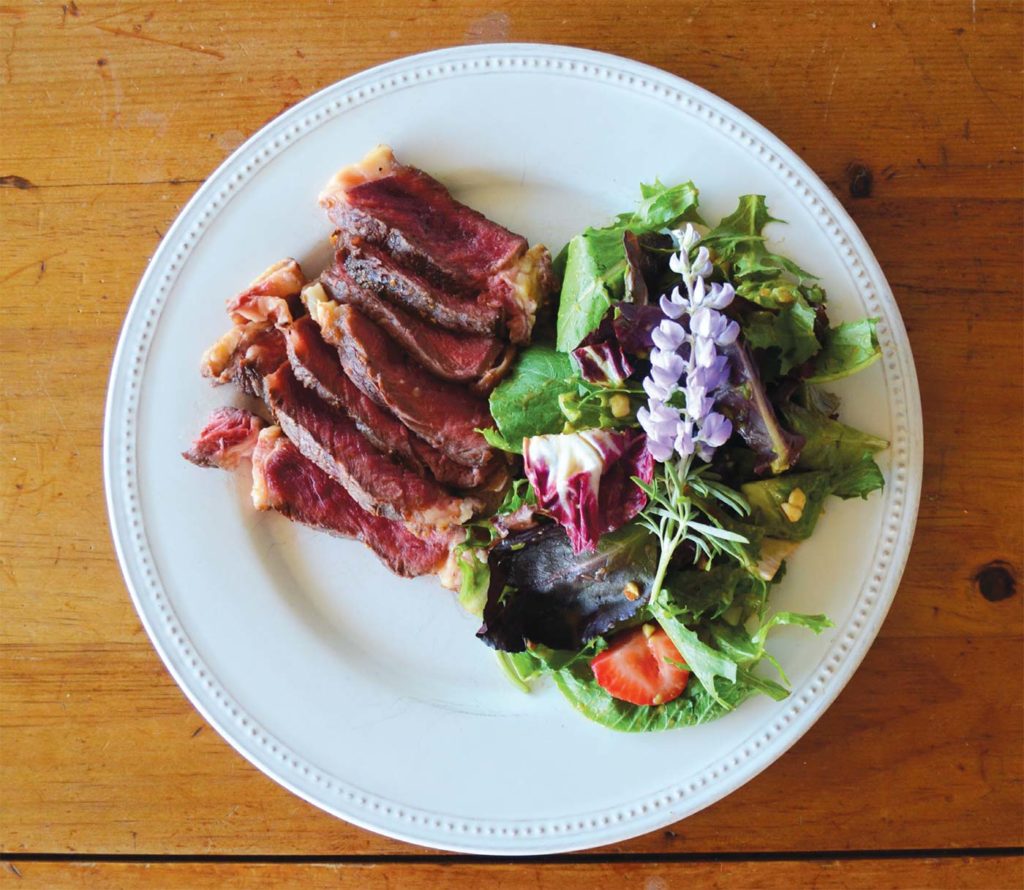
Matt Skoglund believes it’s the management techniques, and not so much the husbandry involved, that makes their ranch successful. He is quick to point out the fallacy that bison are the only solution to ecological problems, and disagrees with the idea that “bison are magical animals, and all you have to do is put bison on the landscape and they will graze perfectly, and that cattle anywhere under any circumstances are bad.”
Instead, he believes that it all comes down to management: “You can use cattle and have great management practices that improve the soil and the grasslands.
And you can have bad management with bison that leads to overgrazing and degraded soil.” Like so many in the progressive ranching industry, Matt Skoglund considers himself both a grass farmer and a bison rancher. Matt’s realistic attitude about management helped make the introduction of bison into cattle country a smooth one.
The Skoglunds relied on help from their cattle-ranching neighbors early on. On the day the bison herd was scheduled to arrive, Matt realized that he didn’t have an offload ramp for his bison; he reached out to neighbors in the area and found a neighbor who was more than willing to lend him one. And when the Skoglunds’ loaded pickup with a bale-bed burned to the ground on a cold and devastating day in March, another neighbor loaned him an extra. Matt says, “That act of generosity and neighborly support? I’ll never forget that until the day I die.”
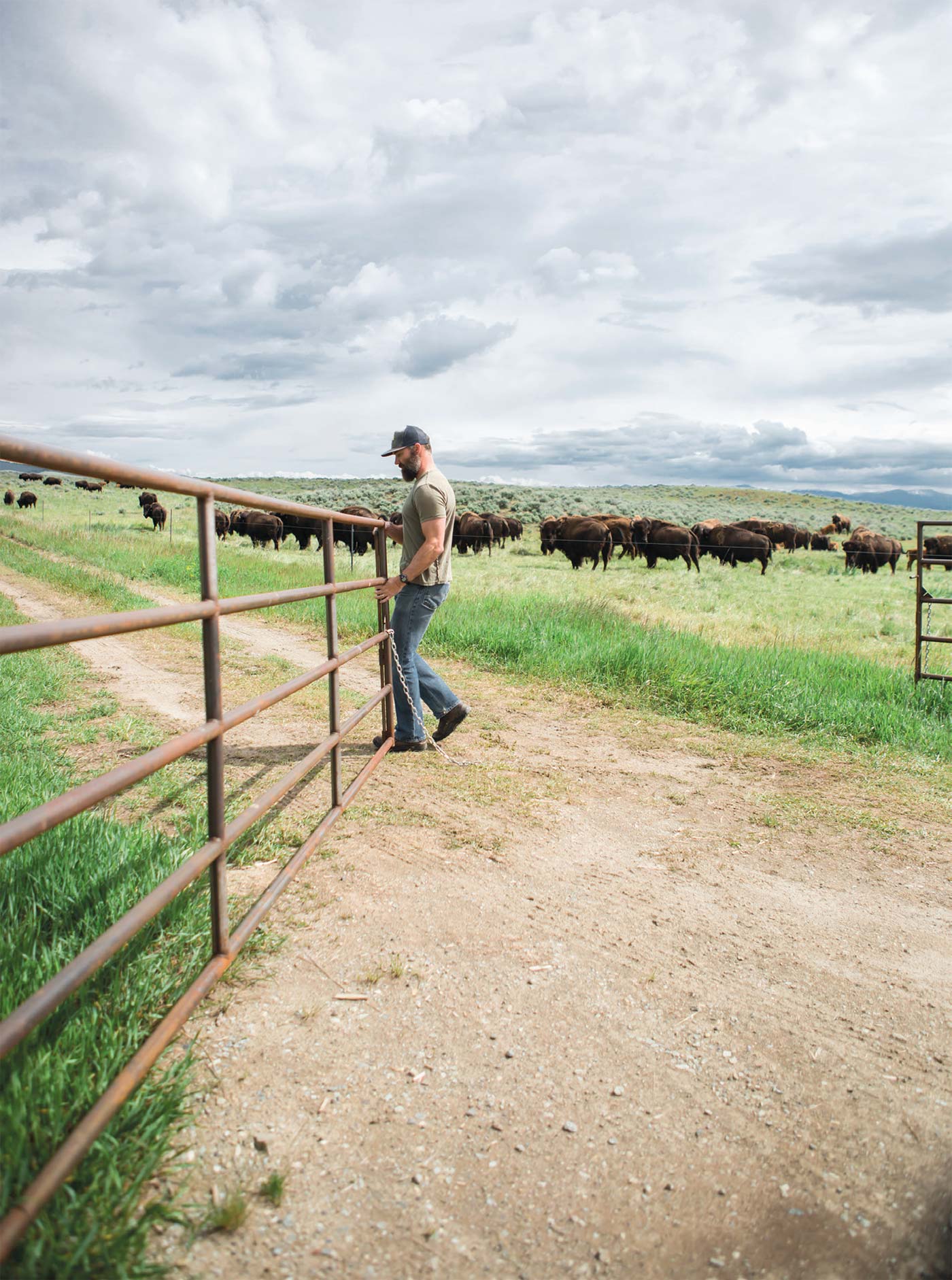
Before becoming a bison rancher, Matt Skoglund worked for the Natural Resources Defense Council for nearly 10 years. During that time, his efforts included policy and advocacy work to help Yellowstone’s wild bison gain access to more year-round habitat outside Yellowstone Park.
“From an ethical and humane standpoint, it doesn’t get any better.”
Matt candidly admits that, as he and his family are not third-generation ranchers, he often relies on his neighbors and their ranching experience when he has questions. The Skoglunds don’t mind that they’re new to ranching—in fact, they wear it on their sleeves, and are hungry to learn: “While we’re new and green for sure, we’re also open-minded to learning from others about how to manage our ranch in the best way possible for the land, the animal, the ranch, and the business,” Matt says.
Initially, there were mixed emotions for some area ranchers, who had reasonable concerns about the introduction of bison into the area, particularly because bison are often perceived as unruly and even destructive.
Skoglund recalls discussing holistic management practices with his neighbors to put their fears of bison to rest. Another major concern for area cattle owners was the potential for the disease brucellosis. The Skoglunds knew the concern was justified, but Matt explained that he had just as much to lose from a brucellosis outbreak as they did, and because of his choice of husbandry, he was especially mindful about purchasing bison that were brucellosis-free.
Matt appreciates that—despite his being new ranching—his neighbors took his knowledge of bison at face value and showed trust in the Skoglunds’ operation. Now, Matt and his family feel at home in the surrounding community and count their neighbors as valued friends; in fact, Matt says that working with his neighbors “has been—by far—one of the most satisfying parts of this whole adventure.”
The years will roll by for North Bridger Bison. Under the Skoglunds’ management the land will slowly change: forbs and wildflowers will continue returning to the soil; wildlife will migrate in and out of the ranch. The bison herd will change, too: It will ebb and flow as animals are harvested and new calves are born. Like any ranching operation, there are no guarantees for success. But the Skoglunds have a resilience that shows they’re in this for the long run. Like so many Montanans in agriculture, the Skoglunds are fiercely dedicated to what they do.



